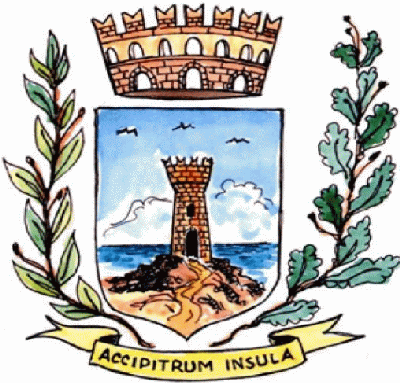
The Judicates of Carytion
by Giulio Caroletti from Threshold Magazine issue 11by Giulio Caroletti
Preface
Carytion was first introduced in the “Dawn of the Emperors” boxed set as a Thyatian Protectorate. The island was so underdeveloped and uninteresting that it didn’t even have an entry in the Atlas chapter, with its description limited to a few lines in the Player’s Guide to Thyatis.
I felt that the island could be a potential source for more, so I completely scrapped the information from the Gazetteer and wrote a new, alternate Carytion. So if you want to use this alternate Carytion, just ignore all the information from the Gazetteer, although it is still true that the island is used as a resort for the wealthy, and there still is a major naval fort. However, now the population has been raised to 70,000 inhabitants, mostly descended from an ancient population related to Thyatians, which had contacts with Taymora before becoming part of the Empire when it was born in AC 0.
This Mini-Gazetteer took its inspiration from my love of the island of Sardinia. I lived there for two years and grew to love its traditions, its culture and its diversity. This article is a labor of love, and I have written it with the utmost respect for the Sardinian people and culture. To “translate” a contemporary real culture into a fantasy culture can always be tricky, especially since I used very explicit references to the real history and geography of the island. I hope that all Sardinian role playing games enthusiasts will appreciate my very humble effort to bring to life as a fantasy setting such a beautiful, culturally rich and fascinating territory.
The Author
Protectorate of Carytion
Area: 2,160 sq. mi. (5,595 sq. km.).
Population: 70,000 including the town of Casteddu (pop. 7,500).
Location: Island off the southeastern coast of the continent of Brun, south of Tel Akbir, east of Lucinius; Known World.
Languages: Thyatian: Carytian regional language (Campidano, Agugliastra, Logudoro); western Thyatian dialect (Gaddura); Ispan regional language (L'Alguer); western Thyatian dialect (U Paize).
Government Type: Dominion, member of the Thyatian Empire, officially governed by Justiciars who rule the four Judicates in which the island is divided.
Industries: Agriculture, crafts, fishing, oil, tourism, wool.
Flora and Fauna: Mulberry trees (for sericulture), grape vines, olive trees, date palms, cedar, peach, pear, orange, and cherry fruit trees in cultivated orchards. Herds of cattle, sheep, horses, goats, and mules. Bees kept for honey. Boars, centaurs, foxes, dryads, and unicorns; terrestrial tortoises and sea turtles.
Carytion is home to a variety of rare or uncommon animals, like the Sea of Dread monk seal, the mouflon, the pine marten, birds of prey like the griffon vulture, the golden eagle and the peregrine falcon, flamingos, and several endemic species: the albino donkey, wild cat, deer, fox, lizards, and salamanders. Various breeds of horses, dogs and sheep are found on the island.
Carytion instead lacks vipers, wolves and bears found on the Thyatian mainland.
Map 2: Judicates of
Carytion
http://pandius.com/carytion_by_6inchnails-d9sxg4b.png
Caption: Carytion in 8 mph (original Thyatis map) in 4 mph (by the author Giulio C.) and in 1 mph (by Robin D). A full size version of Robin’s map can also be downloaded at this address: http://6inchnails.deviantart.com/art/Carytion-592785371 and also here: http://6inchnails.deviantart.com/art/Carytion-art-592785351 with added art.
Geography and Climate
An ancient island from a geological point of view, Carytion is seismically stable and not earthquake-prone. It highlands average at between 300 to 1,000 metres (984 to 3,281 feet), with the highest peak being Picco Giraffa (1,834 m (6,017 ft)). The coasts of Carytion are mostly high rocks, but several large, shallow, salt-water lagoons can be found on the western and northern shore of the island.
Carytion has only three major rivers, the longest of which, the Tiresias, is 58 km (36 miles) long; the Saeprus (39.5 km (24.5 miles)) flows on the southwest and the Nixeddu (43.5 km (27 miles)) flows east. However, there are many artificial lakes used to collect precipitation and provide water and energy for mills and other economic activities.
The island has a Mediterranean climate along the coasts and low hills, and a continental climate in the interior valleys and the central mountains. Rainfall is concentrated in the winter and autumn, and on some of the tallest peaks it is common to have snow in winter for a few weeks each year.
Winds are generally dry and not too strong, so sailing is easy around the island and the hot summer temperatures are more bearable in Carytion than on mainland Thyatis. All of these features make Carytion an ideal place for richer Thyatians to buy summer resorts. This has helped the locals in their fight against the biggest health threat, the diffusion of malaria, bringing much-needed money and resources for land amelioration.
Some of the seawater swamps of the coast have been dried and are now used for salt extraction. Cork oak trees are a common sight on the island, and they are used for cork extraction.
Demography
Most of the population of Carytion is made up of indigenous humans belonging to the Thyatian ethnolinguistic group. Carytians share the common genetic traits of most other ethnically Thyatians – their basic gene pool is Neathar/Antalian/Thantalian with traces of Traldar and Taymoran influences.
However, like most isolated populations, Carytians differ from other Thyatians because of phenomena like the founder effect and genetic drift. Carytians are generally shorter and leaner than average Thyatians, and most have high cheekbones, dark hair and brown eyes, with less than 10% of Carytians having blue or green eyes in comparison to the 10-20% diffusion in the dominions of mainland Thyatians. Inhabitants of coastal plains and towns have more influences from the mainland and are closer to other Thyatians.
For unknown reasons, Carytians are one of the populations of Mystara with the longest life spans. On the other hand, genetic diseases like beta-thalassemia1 and favism2 are much more common than among other Thyatians on the mainland and on other less-isolationist islands.
Cuisine
Sheep and goats
provide milk, cheese and, to a lesser extent, meat to the traditional
diet, along with pasta made of grain. Traditional cheeses include
pecorino (a hard cheese made from ewe’s milk), ricotta (a
creamy cheese made from sheep milk) and casu marzu (notable for
containing live insect larvae).
Carytian bread is dry, so it
lasts longer than high-moisture breads. Pane carasau is a typical
flat, crunchy bread.
Among vegetables and fruit, the most common are oranges and artichokes; olive trees provide oil and olives. Pigs are used mainly for sausages and ham; suckling pigs (porcheddu) and wild boars are eaten roasted or boiled in stews with beans and vegetables.
Among fish and seafood, Carytians eat rock lobster (aligusta), scampi, bottarga (salted, cured grey mullet roe), squid, tuna, mullet and sardines.
Herbs used for cooking include mint and myrtle, from which a typical liquor is made. Red and white wine is common. In U Paize, the cuisine is similar to that of Machetos, and the locals produce the famous pesto sauce originally from that Duchy.
History
Kartana and Taymorans
The first autochthonous culture on Carytion was the Bronze Age Kartana culture, which developed between 1700 and 1500 BC thanks to the influence of the Taymoran refugees escaping the fall of their civilization. Villages of the Kartana were built of round thatched stone huts built around cylindrical tower-fortresses called nuraghi (singular nuraghe), often reinforced and enlarged with battlements. Smaller nuraghi were used as lookout fortresses and indicated the approximate territorial extension of a community, as crop fields and pasture land were generally found between the lookout nuraghi and the central village.
The biggest
Kartana settlements were Turralva and Nora (considered in Carytian
legends to be the oldest settlement on the island, founded by the
eponymous hero Norax, who, according to the legends, led some human
refugees from Mogreth to Carytion between 2300 and 2000 BC).
Nowadays, over 1,000 nuraghi dot Carytion. Some of them were initially simple, but with time they took on a more and more complex structure. Other remnants of the nuragic culture are monumental collective tombs and temples. Some of them, traditionally called Giants' graves by Carytians, also show that in the early stages of the Nuragic culture, the Taymoran refugees had brought with them a few Fomorian giants. However, no giants live in Carytion anymore.
While the Kartana were aboriginal, descended from the first Neathar-Thantalians who had settled the island, during the same era the Taymoran refugees built a few ports in the area, bringing their alphabet with them. The most important Taymoran settlements were Karal (the current Casteddu) and Sulcis.
The location of Carytion in the Sea of Dread and the presence of two advanced bronze age civilizations meant that it was a major trade route at the time of the Nithian Empire, especially for those who tried to stay clear of the routes controlled by that aggressive population. Contacts with other cultures of that era are proven by Kartana bronze statues found among Traldar tombs, and Traldar coins found in nuraghi and ruined Kartana temples.
After a few centuries of peaceful co-existence, the Taymoran refugees took an interest in the natural resources of the interior, like silver and lead, and by 750 BC they had occupied most of the western part of the island. Attacks from the Kartana led to a major war which lasted many decades; and as the Kartana were gaining the upper hand, the Taymorans asked the Nithians for support. Mingling with the dark powers who were on the verge of destroying their own culture allowed Taymorans to reassert their control over most of Carytion.
However, the consequences of the destruction of Nithia and the Spell of Oblivion took their toll on both cultures, whose power and knowledge were affected, leading to a decline in the following centuries.
The Thyatians step in
Kartana and Taymorans alike had to surrender to the Thyatian invaders in 238 BC; a few years before Alphatia conquered all of the Thyatian mainland. Since the Alphatian conquest, Carytion linked its own history to that of the city of Thyatis, and became a province of the Empire when it was founded in AC 0. However, some features of the Kartana culture were kept in the mountainous interior of the island, where the locals fought whoever was the official power ruling the island from afar - whether from Sundsvall or Thyatis -, led by werefoxes and wereboars loyal to the old Taymoran deity Nyx.
Northmen raiders started attacking Carytion after AC 400; the Thyatians thought of buying their services to stop the raids and use them against the Alphatians. In AC 456 they granted their most powerful pirate lord, Ole Jørgen Thorfinnson, the rule of the island under the Empire’s sovereignity. However, when Ole Jørgen’s grandson Vidarr declared independence in AC 533, the Thyatians troops occupied it again. Vidarr’s son Thorfinn led a small invasion with Alphatian support, and took the island by surprise in AC 551, but the Thyatians conquered it again after a few months, and most Ostlanders were killed or fled Carytion.
During this era, Carytion was divided into four districts called Judicates, each ruled by a Justiciar (judex in Thyatian). One of the major problems the Justiciars had to face was the continued presence of rebellious followers of Nyx in the Agugliastra region. Valerio Folaga, last leader of the followers of Nyx surrendered in AC 594, with the establishment of a Vicar Justiciar to rule Agugliastra as a representative of the Justiciar of Casteddu in Karal.
The major threat on Carytion in the following centuries were pirate raids on the Thyatian islands, which started in the 8th century and continued in the following one, with its main peak of activity when Alasiyan raiders started their activities after 850, following the independence of Ylaruam (AC 831) and the expansion policy started by al-Kalim and his followers.
This pirate activity led to the building of many small forts that dot the coastline of the whole island, used in the 9th century to watch out for approaching Alasiyan ships. It was during this time that two new cities were built on Carytion by refugees escaping Ylaruam: U Paize (AC 739), built by Thyatians of Machetan origin, and L'Alguer (AC 853), built by Ispans. Both cities have enjoyed a freeport status since then.
In recent years, the major threat to Carytion has been the occasional pirate - from the Isle of Dawn, Ylaruam, Northern Reaches or from other smaller pirate coves in the Sea of Dread.
Politics3
Carytion is divided into four Judicates, and three special territories (the Visjudicate of Agugliastra, the Free City of L'Alguer and the Free City of U Paize).
The Judicates are four autonomous entities, ruled by a Justiciar and by a regional assembly called Corona de Logu (“local crown” in Carytian). The Visjudicate of Agugliastra shares the same structure, but is considered a vassal of the Judicate of Casteddu. The cities of L'Alguer and U Paize are self-ruled.
However, the four Justiciars and the rulers of Agugliastra, L'Alguer and U Paize are not considered dominion rulers (and thus these domains have no senatorial rights – they are neither Senators nor can they choose a representative for the Senate), but are considered subject to the authority of the Praetor of the Mainland Islands4 (in AC 1000, the year when this gazetteer is set, it is Archduke Derentarius of Terentias). Carytion has only one elected Senator5.
This situation has caused an increasing rift between the population and the Empire, as most citizens and rulers alike want to push for the establishment of feudal dominions on Carytion. There are however differing point of views on this.
The ruling families of Arborea and Casteddu would like to constitute a County with a single ruler, while the ruler of Logudoro would prefer to split the island into four baronies. In Gaddura, L'Alguer and U Paize, the population hopes to keep the status quo. Especially so in the two freeports, since they know they are too small to be given a fief, and they fear losing their special rights and ethnolinguistic independence.
In Agugliastra and in the most of the rural interior, there is also a small independence movement who would like to secede completely from the Empire. The most vocal among the independentists is a secret, increasingly violent organization known as the Dark Masks.
The Judicates
A Judicate is ruled by a Justiciar, supported by the Corona de Logu (the local parliament).
The Corona de Logu is a Judicate council made up of: local representatives (one from each Curadoria, see below), two representatives from the capital of the Judicate, and a varying number of high priests from all the churches of the Judicate.
Each Judicate is divided in a number of administrative divisions called Curadorias. All free citizens of a Curadoria concur to the election of a representative at the Corona de Logu. Each Curadoria is ruled by a Curator nominated by the Justiciar; the Curator in turn nominates a Mayor for each town and city in the Curatoria; the Mayor is assisted in ruling by an elected council; members of the elected local councils elect the Corona de Curadoria, the local assembly assisting a Curator in ruling.
Formally, it is the Corona de Logu which elects the new Justiciar amongst the members of the ruling family. Generally, the Justiciar nominates his or her heir, but the Corona de Logu has the right to overrule his or her desires.
Apart from those mentioned, the Corona de Logu (and the Corona de Curadoria on the smallest scale) have no formal power, but they simply act as counselors to the actual rulers. However, complaints and dissatisfaction can easily gain the attention of someone above in the chain of command who can remove him or her. A Justiciar which enrages his or her Corona de Logu can end up attracting the attention of the Praetor of the Mainland Islands or, in the worst cases, of the Emperor himself.
In Agugliastra, there is a Corona de Logu, but the Justiciar is formally the Justiciar of Casteddu. However, there is a Vicar Justiciar, who normally acts in the name of the Justiciar of Casteddu. The Justiciar of Casteddu can overrule any decision made by the Vicar Justiciar; however, cases in which the Justiciar of Casteddu has interfered with the rule of Agugliastra, without having been called upon by the local Corona de Logu, are rare.
Religion
Most Carytians follow the Church of Thyatis; however, since 594, when the followers of Nyx in Agugliastra surrendered to the central rule of the Empire, Nyx has been recognized as a deity on the island. Followers of Nyx are few, mostly found among the most superstitious inhabitants of the central areas, or among scholars and intellectuals, especially in Agugliastra. Although it is legal to belong to the cult, priests and religious representatives of Nyx are kept secret, because of the prejudices attached to the cult of an Entropic Immortal, and because the Church of Thyatis would lobby with all its strength against any political role for followers of Nyx. However, a few priests of the Church of Thyatis are against this secrecy policy, as they fear this can end up favouring the goals of Nyx’s clergy. Rumor is that the ruling family of Agugliastra has something to do with the cult.
Administrative divisions
Agugliastra
Coat of Arms
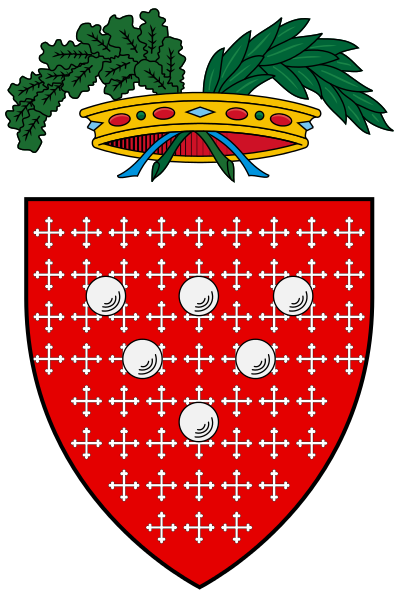
Agugliastra
Agugliastra (pop. 1,400) is the most mountainous area of Carytion. Terrain is ragged and hilly, with small valleys in the inside and just thin strips of plains or beaches close to the coastal areas. The highest mountains of Carytion, which include the massif of Perdas Carpìas (broken stones in Carytian) and the highest mountain of the island, Picco Giraffa (giraffe peak in Thyatian, 1834 m (6,017 ft)), are located at the border area between Agugliastra, Logudoro and Casteddu.
Sheepherding and
farming are the main economic activities of the poor, hilly interior.
Hunting is especially popular in this area of Carytion. The people of
Agugliastra are the most Taymoran-influenced on Carytion, and several
Agugliastrans are secretly followers of Nyx, a cult tolerated on the
island. It is believed that the high priests of Nyx on Carytion live
in Agugliastra.
The capital of Agugliastra is Tortuelie (pop. 550, including 100 in the port village of Arbatax), a coastal town where Folaga Palace is the Justiciar’s residence.
The main city of the interior is Lanuse (pop. 270), with an important shrine dedicated to Valerias and an important market for the central areas of Carytion that is held every two weeks in summer and every month in winter.
NPCs
Mariano Folaga (born 970, F12, TN), a short, lean man with hair kept long at his shoulder, and gray-green, sad eyes, is the Vicar Justiciar of Agugliastra. Mariano is not a follower of Nyx, although he knows that his cousin Deianira (born 973, C9, TN), a diminutive, busty beauty with honey blonde hair and green-blue eyes, is a Patriarch of that Entropic Immortal.
A former soldier, Mariano lost his wife Patrizia to malaria two years ago. Patrizia Murru (born 970, nosferatu W3, LN), a delicate, slender woman with jet black hair and deep, amber eyes, has been raised as a nosferatu by Mariano’s aunt Augusta Zedda (born 944, nosferatu C13 (of Nyx), NE), the High Priest of Nyx on Carytion, a comely woman, apparently in her late thirties, with a prominent jaw and dark, short, curly hair.
Augusta and Patrizia live in Lanuse; Mariano has never forgiven them for having embraced undeath. His sister Deianira is torn between the desire to join the ranks of the undead servants of Nyx and the love for her brother, a man without true friends and without an heir, who has only her left for family.
Pietro Deplano (born 961, wereboar F8, NE) is the Mayor of Jersu, a small, mountainous town of about 160, at 400 m asl. He has Taymoran blood and is one among a few Carytians who still bear the old Taymoran-Nithian strain of lycanthropy6. Deplano is deeply hostile to the Empire and he is the leader of the Dark Masks, an illegal political organization who pushes for an independent Carytion and is not above kidnapping and assassinations to make their point.
Deplano’s second-in-command is Valerio Scanu (born 976, devil swine C7 (of Thanatos), CE), a young devil swine and secretly a priest of Thanatos. Scanu has been sent by Count Heinrich Oesterhaus7 to Agugliastra to plot against the followers of Nyx. His first goal is to put an end to the Folaga dynasty in Agugliastra and open up the region for direct control from Casteddu; his second goal is to increase the violence of the Dark Masks to prevent Carytians from gaining true dominion status for the Judicates. To make things more complicated than ever, after Scanu was sent to live in Tortuelie to stir things up at the court of the Justiciar, he has fallen hopelessly in love with Deianira, the sister of Mariano.
The only dragon on Carytion, an onyx dragon which is known as U Enigmista, has his lair in Agugliastra. He is a young adult male known to be a trickster and prankster.
Arborea
Coat of Arms
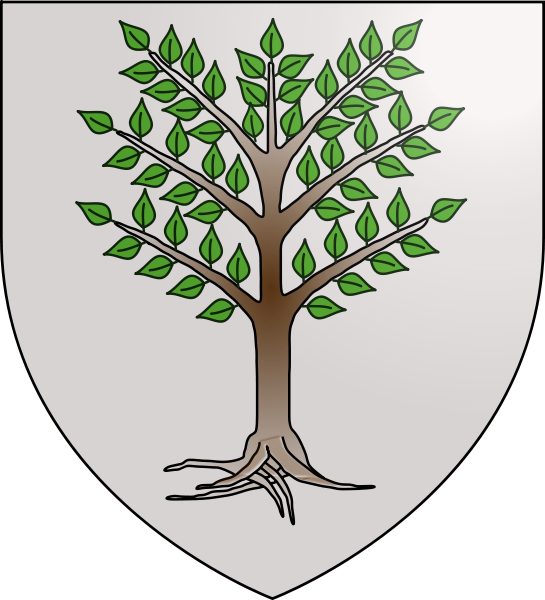
Arborea
In proportion, Arborea (pop. 4,710) is the richest Judicate of Carytion. It lies on the most fertile land of the island, and its wheat production rate is among the highest in the whole Empire. However, pockets of malaria-ridden swamps are found also on its territory. It is the hottest area of Carytion, and hot, humid summers with daytime temperatures over 40°C are not uncommon; the strong winds that blow from the north provide a welcome relief to the heat.
Arborea is the most advanced and powerful Judicate on the island; even though it is much smaller than Casteddu, it relies on its arcane and scientific knowledge. The city of Aristanis (pop. 1,600) hosts the only Collegium Arcanum (School of Magic) of Carytion, and its cavalry and horses are considered among the best of the whole Empire. While Kerendan cavalry has the numbers, it is said that the Arborean light cavalry is the elite among the elite.
Traditionally, the sons and daughters of the aristocracy of Aristanis train for part of their adult life at the Kerendas Academy, but almost any man and woman in Aristanis knows how to ride and every family provide at least one member for every generation to take part in the riding competition called Sartiglia, for which they train all year long.
Among the other towns of Arborea, the most important is the walled town of Seddori (pop. 420). Seddori lies on a hill and has an impressive castle which dominates the surrounding plains; the city has mostly been controlled by Arborea, but is claimed by Casteddu. Many skirmishes and battles have been fought over its possession when Imperial control over the island has been loose.
NPCs
The ruler of Arborea is Justiciar Claudia Laconi (born 955, W11, LG). A short, lean woman in her mid-forties, with graying jet-black hair and brown eyes, Claudia graduated at the Collegium Arcanum of Aristanis, owns an estate on Sclaras, and is loved among her subjects and respected by her enemies.
Claudia has been Senator for Carytion in the past, and has spent most of her political life lobbying through friendly Senators (especially among the Philosophers faction) in order to become Countess of Carytion - or at least Baroness of Arborea. Her ultimate goal is to bring all of Carytion together under the banner of Arborea. Her main political enemies are the rulers of Casteddu and Gaddura, but she is sympathetic to Justiciar Marcus of Logudoro, and she is a personal friend of Archduke Nurokidu Nuar of the Pearl Islands.
Claudia is married to Olaf Gudmundson (born 950, F9, CN), a noble and former pirate from Ostland. Olaf is a tall, blonde northman with a broken leg that cannot heal because of a curse set on him by Protius, although nobody knows exactly what Olaf did to offend the sea Immortal.
Claudia and Olaf have three children - Eloisa (born 984, W1, LG), who has just started studying at the Collegium Arcanum, Godrik (born 990, NM, NG), who wants to become a pirate like his father, and Gavino (born 992).
Paulus Pittau (born 937, W17, CG) is the principal of the Collegium Arcanum and the former teacher of Justiciar Claudia. He is a good man who puts his own personal ethics before anything else. When he is not busy working on new spells or teaching at the Collegium, Pittau travels throughout Carytion’s towns and country in disguise, to find promising youths that can become magic users, but also scientists or literates (in which case he will ask friends at various colleges of the Empire for help in accommodating them).
Casteddu Coat of Arms
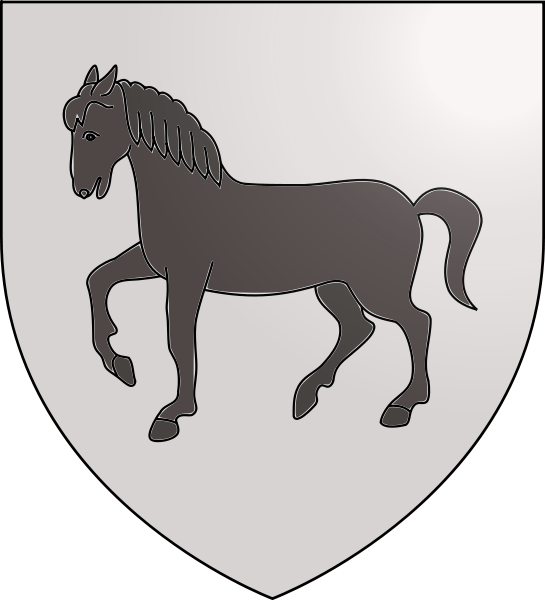
Casteddu
The Judicate of Casteddu (pop. 37,440, excluding Agugliastra) is the biggest of the Judicates.
The climate of the Judicate of Casteddu is Mediterranean, with mild winters and warm, dry summers. Temperatures very rarely go above 40°C in summer, or below 0°C in winter. Most of the Judicate is made up of the northern plains where the wheat production is abundant. In the areas south of Casteddu, on the other hand, orchards and cork oaks are the main agricultural activities.
Casteddu (pop. 7,500), the capital, was founded with the name of Karal by Taymorans on seven hills looking over the Sea of Dread and takes its Thyatian name from the main hill of the city, a heavily walled area (Casteddu means castle in Carytian) around which smaller quarters have been built. The area outside the central hill has been renamed Torion recently, in honour of the Emperor, something that has triggered even more hostility towards the central imperial government among most Casteddans (and exacerbated the feeling among non-Casteddans that the people of Casteddu are just lickspittles of the Emperor).
Casteddu is a very windy city, with winds coming generally from northwest or southeast. Sea breezes from southeast often blow during the summer, making the days more tolerable than in the hot crop fields of the northern plains.
Quartu (pop. 3,500) is the third most populated city in Carytion. The city takes its name from the fact that it was originally divided in four (quattuor, in Thyatian) parts or quarters. It lies just south of Casteddu and west of a small mountain range named the Seven Brothers, where boars and deers are hunted by the locals, and whose tallest mountain reaches 1,070 m asl.
Between Casteddu and Quartu lies the marsh called Molentargius, where salt is extracted and where many species of birds nest. Many towns and villages surround Casteddu and Quartu, so that the whole metropolitan area including the two cities is home to about 15,000 people.
Sulcis (pop. 550) was an ancient Taymoran city, but today just a few ruins remain on the outskirts of town to remind of its origin. The abandoned ruins of Nora, an ancient Kartana city rival of Sulcis, are just a few miles away.
Igresias (pop. 1,300), east of Sulcis, is an important mining centre for the extraction of lead, zinc and silver.
Biddexidru (pop. 700) faces Seddori in Arborea (see above), and is its rival town.
The Carytion Naval Fort, the main stronghold of the Empire on the island, a major strategic defensive position in the Sea of Dread, is located in the Judicate of Casteddu.
NPCs
The ruler of Casteddu is Giovanni Pisano (born 948, NM, NE), a wealthy man who has abused his position to increase his personal possessions; moreover, he has the monopoly of commerce between Casteddu and Minrothad.
Giovanni is despised by most citizens and has corrupted the military at the Carytion Naval Fort, with lavish gifts, to help him to keep order in the region. Telemakos Fabiani (born 964, F5, NE), the commander of the Fort, is a corrupt and inept man, but most of his soldiers support him. They feel they are stuck in the backyard of the Empire, and that the only reasonable thing they can do is to do the least possible while gaining the most in return.
Giovanni’s main political opponent is his cousin Aemilius (born 964, F6, CN), the commander of the garrison of Biddexidru. Giovanni sent him there to avoid the risk of a revolution in town; however, the proximity of Biddexidru to Arborea has had the unexpected result to bring Aemilius in touch with Paulus Pittau, the principal of the Collegium Arcanum in Aristanis. Pittau is wondering whether he could introduce Aemilius to Justiciar Claudia and gather support for overthrowing Justiciar Giovanni.
Gaddura
Coat of Arms
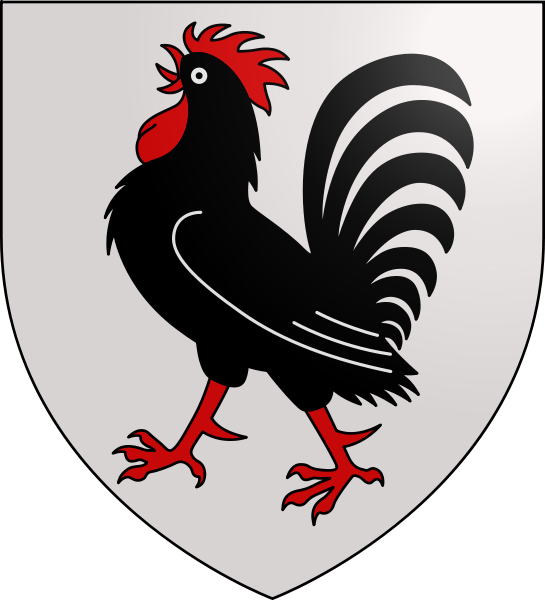
Gaddura
Gaddura (pop. 10,000) was traditionally the least populated of the four Judicates, but grew thanks to tourism from the wealthy Mainland Thyatians in the last century, after the number of Alasiyans incursions on Carytion had reduced significantly.
Gaddurans are not “true” Carytians. Most of the inhabitants of the Judicate are of Kerendan origin: they came following the inheritance of the title of Justiciar by Ranieri I, a cousin of the last aboriginal Gadduran Justiciar, in the 7th century. The wave of Kerendan migrants continued for over a century, so much that the Gadduran dialect is no longer considered a form for the Carytian regional language, but a western Thyatian dialect.
The coast of
Gaddura is considered one of the most beautiful in the Known World,
and hosts the summer residences of many of the wealthy and the
powerful in Thyatis. While politics and land-based economic
activities take mostly place in the other three Judicates, Gaddura
and its capital, Tarranoa (pop. 2,700), have prospered from
services (pubs, taverns, naval activities, tourism).
For all these reasons, contrary to most other Carytians, Gaddurans oppose any modification of the political structure on the island. Their ties to the Mainland are much stronger than those to the other islanders.
An exception to this are the westernmost areas of Gaddura, whose main center is Thiniscole (pop. 550). Here, the population is made up of Carytians who speak a variant of the Logudoran dialect, and are among the fiercest independentists on Carytion. At the very least, the Logudorans of Thiniscole would like to secede from Gaddura and join Logudoro.
One of the most important religious sites on Carytion is located at the aptly-named Tempiu (pop. 700; “temple” in Gadduran Thyatian); here, there are temples dedicated to Solarios, Valerias, Vanya, Asterius, Nyx and Tarastia. It is also the seat of a School of Theological Studies. In Tempiu, one of the biggest carnivals of the Mainland Islands, lu carrasciali timpiesu, takes place in Vatermont.
NPCs
The ruler of Gaddura is Ranieri IV della Gherardesca (born 924, T6, LN), an old, tall, thin, frail man who has had a major hand in the development of Gaddura as a tourist resort for the rich. Ranieri IV is well-loved by his subjects, but he despises non-Gadduran Carytians and considers them just obnoxious savages. A fierce supporter of the Zendrolian faction in the Senate, he opposes with all his resources the creation of a unified County in Carytion - also because most of the population of the island would never accept a Gadduran unified ruler - so if he can’t be the Count, there is no point in lobbying for that goal.
Ranieri has had three wives and has many sons and daughters; he has married them to aristocrats of Gens Zendrolian or Gens Aemilia all over the Empire. His appointed heir is Dante (born 958, F3, P9 (of Asterius), NG), a liberal-minded priest-merchant who has sailed the Sea of Dread and the Sea of Dawn on Minrothaddan, Thyatian and Ostlander ships. Dante is married to Augilly Hiljemarj (born 840, T9, CG), a Meditor elf; they have two sons and two daughters, Ranieri (born 988), Anita (born 991), Ferdinando (born 994) and Rahasia (born 997).
Alguer
Coat of Arms
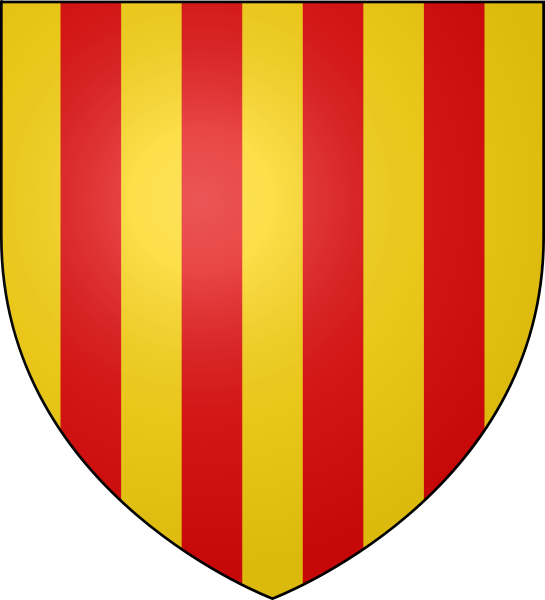
L’Alguer
L’Alguer (pop. 2,000) is an Ispan city on Carytion, and the main center of the Ispan culture in the Empire of Thyatis.
Founded by Ispan
refugees fleeing Ylaruam in AC 853, L’Alguer remained
completely outside the conflict between the Ispan followers of
Solarios and the Church of Thyatis, and thus the Algueran Ispans
avoided exile, and the city became an important cultural centre.
L’Alguer is renowned for its craftsmen, painters, musicians and
poets, who write sophisticated songs in their Ylari-influenced Ispan
dialect.
L’Alguer is located in a favourable position on Carytion; compared to areas of nearby Arborea, it is much more temperate in summer, because it feels the influence of winds from the north and from the east.
Logudoro
Coat of Arms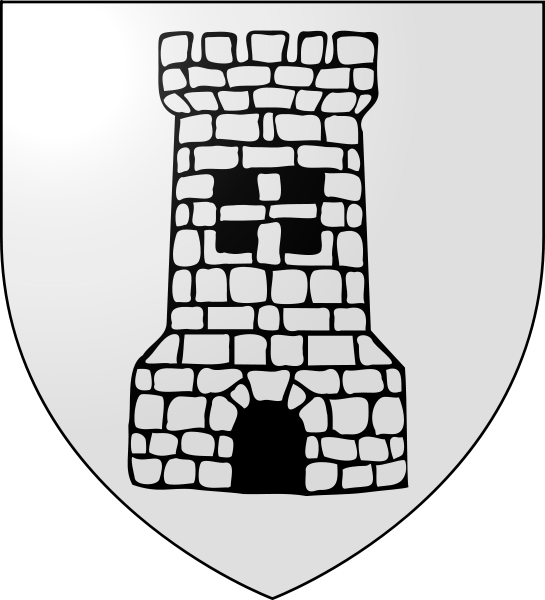
Logudoro
Logudoro (pop. 14,000) occupies the northeastern part of Carytion, the most windy region of Carytion.
Although its capital is Torres (pop. 1,100), where the Justiciar’s palace and the main port of Logudoro are located, the most important city is Tatari (pop. 6,200), the second biggest on Carytion.
A city of poets, Tatari is considered the home of the purest Carytian regional language, and is home to the Academia de Limba Karta (Academy of Carytian language). Although the authority of the Academia is not widely accepted on the island, most intellectuals and scholars who want to write in Carytian tend to use the grammar and orthography developed by the Academia.
Another important city in the region is Nugoro (pop. 1,800), which lies on the border with Gaddura. Nugoro is a landlocked city which can be considered the most traditionalist or the most backward on the island, depending on your point of view on the matter. There are many contacts between the garrison and politicians in Nugoro and the independentists of Thiniscole, in Gaddura.
Torralva (pop. 50) was one of the most important Kartana cities. Now it is only a bunch of farms and houses close to the ruins of the ancient Torralva nuraghe.
NPCs
The ruler of Logudoro is Justiciar Marcus Spiga (born 969, W3, LN). A short, thin man of pale complexion in his early thirties, with a black-blue beard, black hair and dark, brooding eyes, Marcus is not interested in politics. He is a scientist and a man of literature, a poet and philosopher who studied at the Academia and became a ruler early because his parents died in a naval accident while they travelled to Thyatis City, three years ago.
Marcus is mildly supportive of Justiciar Claudia’s idea of a unified Carytion. Marcus feels that the Logudoran language and culture would benefit from an official political union, as it could become the leading light for the intellectual life on the island. However, he is not sure whether his subjects would like to be ruled by the Arboreans or - the Immortals forbid! - by the Casteddans. In the end, Marcus believes that Claudia’s ideas of unity are little more than delusions, and thinks that to create four Baronies on the island would be more feasible.
Claudia likes this silent young man; she doesn’t know that Eloisa, her young, 16-year old daughter, has also developed a teenage crush on the Justiciar of Logudoro from his frequent travels to Aristanis to discuss science, literature and politics with Claudia and Pittau, the principal of the Collegium Arcanum.
In the last five years, Marcus, unbeknownst to all but his closest friends, has had a complicated, on-off relationship with Irene Mrazani (born 972, werefox T8, CN), a swashbuckler and werefox of Taymoran descent. Irene, who is originally from Sulcis, spends a lot of time away from Carytion as an adventuress and piratess, and has had other occasional affairs in the meantime. Irene loves Marcus very much, but doesn’t want to lose her freedom and carefree way of adventuring on the seas. This has given the thoughtful, introspective man even more cause for brooding.
U Paize Coat of Arms
U Paize
U Paize (pop. 450; The Town, in Machetos Thyatian dialect) consists of two towns located on the northwestern tip of Carytion. U Paize proper (pop. 310) lies on a small island just outside of the Carytian coast, and is connected to the main island by a ferry which lands in Cadasedda (pop. 140), a small port town on Carytion.
The region is nominally independent from any Judicate on Carytion. U Paize is self-ruled, and its ruling council overlord is the Praetor of the Mainland Islands.
The population of U Paize is entirely of Machetan origin. They descend from a group of families who had moved from Machetos to the Ylaruam province of Nicostenia in AC 542, at the time occupied by Thyatis. In 739 they left Ylaruam after they obtained from the current Emperor the possession of the small island where they built their town (AC 739), after which they were also given the control (and freeport rights) of the port of Cadasedda (AC 770), just opposite to U Paize on Carytion.
Just like their cousins in Machetos, the inhabitants of U Paize are considered avaricious and greedy. The freeport rights and their mercantile disposition have not helped Carytians to overcome this prejudice.
1 Beta-thalassemia is an inherited blood disorder which can lead to severe anemia. For more informations, see: https://en.wikipedia.org/wiki/Beta_thalassemia.
2Favism is genetic condition that can cause hemolytic crisis (accelerated rate of red blood cell destruction leading to anemia, jaundice and reticulocytosis) in response to the consumption of certain foods, most notably broad beans. Symptomatic patients are almost exclusively male. See also: https://en.wikipedia.org/wiki/Glucose-6-phosphate_dehydrogenase_deficiency.
3The local rules for Carytion are different from those for most Thyatian dominions as described in Threshold Issue 3, pp 215-216.
4See also: “Thyatian Senators”, part 2, pp 197-198, Threshold Issue 4.
5For those using the previous articles on Thyatis and Thyatian Senators by the author, add one Senator for Carytion to the total amount of elected Senators of the Empire.
6See Treatise on Lycanthropy by John Calvin, http://pandius.com/lyctreat.html
7See Dawn of the Emperors, County of Hattias entry; or Thyatian Senators, part 1, Threshold Magazine, Issue #3.
